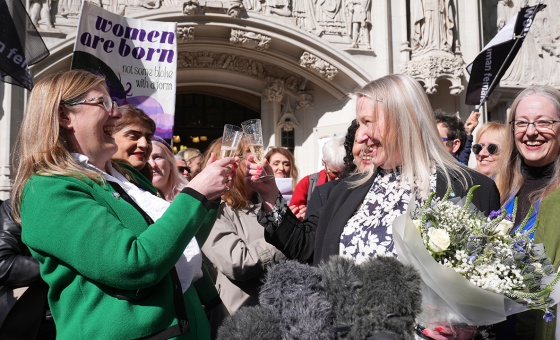This is the last article you can read this month
You can read more article this month
You can read more articles this month
Sorry your limit is up for this month
Reset on:
Please help support the Morning Star by subscribing here
This year that bastion of high principle Fifa — the controlling authority for professional football and multimillion-pound bungs — decided to try to ban England and Scotland players wearing the poppy for an international match on Armistice Day.
Fifa says that its ban on the poppy is part of a general prohibition on any “political, religious or commercial messages.”
So does the poppy fit that description? The British Legion claims not: “We see no reason why the poppy should be banned from players’ shirts as it is not a political symbol. It is not a political statement or a sign of support for war,” but instead a symbol of “remembrance and hope.”
A different opinion comes from Harry Leslie Smith, a 93-year-old WWII RAF veteran, who has not worn a poppy since 2013 because he believes: “The spirit of my generation has been hijacked” by today’s politicians to “sell dubious wars” in Afghanistan and Iraq.
West Bromwich Albion and Republic of Ireland midfielder James McClean also refuses to wear a poppy, arguing that it represents all the conflicts the UK has taken part in including, in particular, his own home city of Derry where British paratroopers killed unarmed civilians on Bloody Sunday in January 1972.
The Neanderthals of the fascist right in organisations like Britain First exploit the whole poppy thing claiming it as the symbol of white racial superiority, anti-immigration and much else. Strange, these same people deny the Holocaust and the need we had to defeat Hitler and his nazis in the last world war.
So why are there poppies at all? Ten million soldiers were killed in WWI. As the men and the brave women who nursed them at the front slowly returned home from war, many had shell-shock — what we now call post-traumatic stress disorder — they all had stories to tell.
Those who had seen such horrors in the blood and mud of the trenches in Belgium and northern France also would tell a much more uplifting story of the extraordinary beauty, persistence and profusion of the fragile but defiant flower — the blood red corn poppy.
US and Canadian organisations first arranged for artificial poppies to be made by French war widows — the money raised went to war orphans.
British soldiers too came back from the grimness of war to find that life wasn’t “fit for heroes” as they had been promised. Rudyard Kipling summed it up in a couple of lines: “If any question why we died / Tell them, because our fathers lied.” Sounds a bit like the Chilcot report.
Some of the returning WWI soldiers organised themselves into ex-servicemen’s societies of various political opinions and of varying degrees of militancy. In 1921 many of these organisations came together as the British Legion.
Sadly, the Legion soon became dominated by the officer class, the very same donkeys that had led the lions in the trenches. They paid themselves good salaries as the charity became one of the richest in Britain.
In 1921 the Legion bought one and a half million of those French-made artificial poppies and sold them to the British public, raising over £10,000. Poppy day had been invented.
Soon the British Legion set up its own poppy factory where disabled ex-servicemen made the poppies. Today it is a multimillion-pound business.
The Legion adopted as its slogan: “Honour the dead, care for the living.” Today Theresa May and her fellow Tories may wear the poppy but claims for benefits for recently serving military personnel are taking longer and longer to process and becoming harder and harder to get as a result of Tory spending cuts.
In 1926 the No More War Movement suggested that the British Legion should be asked to put “No More War” in the centre of the red poppies instead of “Haig Fund.”
Douglas Haig was “Butcher Haig,” the general who had commanded British forces at the Battle of the Somme — one of the worst bloodbaths in British military history.
When it came to lions led by donkeys Haig was certainly Britain’s biggest donkey — two million brave lions died under his orders. The officer class running the British Legion chose to keep Haig’s name on their poppies until 1994.
In 1933 the first white poppies appeared on Armistice Day — mostly home-made and worn mainly by brave members of the Co-operative Women’s Guild.
Just a year later the Peace Pledge Union was formed and it began widespread distribution of white peace poppies in November each year.
Just as today, it took real courage and real commitment to wear the white peace poppy, exactly the same courage as those conscientious objectors who refusesd to go to war on pacifist principles like my uncle Edward.
So which will you wear?
My wife Ann always wears a red poppy and so do I. The flower has a strong personal family connection. She wears it in proud memory of her dad Fred, who always wore his red poppy in memory of his own father, another Fred, Ann’s grandfather.
Grandfather Fred died in France in 1917. He had been in France just days and his body was never found. He left a widow and four children including young Fred, then aged just six.
Fred hated war as much as anybody but his red poppy was the only memorial to his dad he ever had. No wonder he wore it with pride and encouraged his young daughter to wear it too.
So wear your poppy, red or white or both, with pride. Or chose not to wear one at all. It is a deeply personnal decision and one that deserves our respect.
Poppies red, white or none are about the respect each of us feels for those who paid the greatest price in the futility of war.
Sadly young soldiers are dying still and on battlefields all over the world blood red poppies still flutter in the wind.









